#french institute
Explore tagged Tumblr posts
Text

Napoleon Bonaparte among the members of the Institute by Édouard Detaille
#édouard detaille#art#napoleon bonaparte#napoléon bonaparte#institut de france#first consul#premier consul#french republic#first french republic#french#france#paris#napoleonic#history#europe#european#revolutionary france#napoléon#napoleon#bonaparte
287 notes
·
View notes
Text

Christ Receiving the Children
Artist: Sébastien Bourdon (French, 1616–1671)
Date: 1650–1660
Medium: Oil on canvas
Collection: Art Institute of Chicago, Chicago, IL, United States
Description
In this illustration of an episode from the Gospel of Mark in the New Testament, Jesus (reclining at center) admonishes his disciples not to prevent little children from approaching him. Sébastien Bourdon's figures wear draperies in the antique fashion, and the setting evokes both ancient Rome and the Christian Holy Land.
One of the most versatile and successful 17th-century French painters, Bourdon emulated the rigorous classical style of Nicolas Poussin. Bourdon knew Poussin's work (such as the painting on view in this gallery) from his early years in Rome. Following Poussin's compositional principles, Bourdon organized this scene as a series of parallel, stage-like registers, resulting in a calm, geometric order.
#painting#oil on canvas#fine art#artwork#christianity#gospel of mark#biblical scene#jesus#christ receiving the children#children#men#women#architecture#french culture#oil painting#landscape#palms#cloudy horizon#french art#sebastien bourdon#french painter#17th century painting#european art#art institute of chicago
59 notes
·
View notes
Text

Carolus-Duran (1837-1917) "Merrymakers" (1870) Oil on canvas Located in the Detroit Institute of Arts, Detroit, Michigan, United States
#paintings#art#artwork#genre painting#genre scene#carolus duran#oil on canvas#fine art#detroit institute of arts#museum#art gallery#french artist#family#child#children#baby#mother and child#birds#animals#happy#smile#smiling#clothing#clothes#1870s#late 1800s#late 19th century#a queue work of art
238 notes
·
View notes
Text
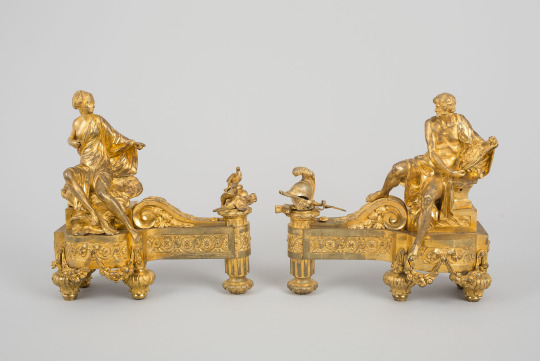
Pair of firedogs representing Venus and Mars, designed by Quentin-Claude Pitoin and modeled by Etienne-Maurice Falconnet
French, c. 1769
gilt bronze and iron supports
Art Institute of Chicago
#I looked up firedogs and I'm still not really sure what they are...#These seem awfully fancy to use to hold a fire!#Venus#Mars#firedog#French#art#sculpture#bronze#gold#iron#Quentin-Claude Pitoin#Etienne-Maurice Falconnet#rococo#Art Institute of Chicago
194 notes
·
View notes
Text
Pont des Arts 🕺🌼🧁🥳




#Institut de France#French Academy#Seine#River#Bridge#Pont des Arts#Cityscape#Tree#Contrails#Cloudy Sky#Napoleon Courtyard#Cour Carree#Louvre Palace#French Moments#Paris#France
89 notes
·
View notes
Text

Allegorical Figures
Artist: Jean Simon Berthélemy (French, 1743-1811)
Date: c. 1770
Medium: Oil on canvas
Collection: Detroit Institute of Arts, Detroit, Michigan, United States
#painting#allegorical figures#allegorical art#oil on canvas#fine art#artwork#french culture#french art#floating#clouds#female figures#drapery#oil painting#jean simon berthelemy#french painter#european art#18th century painting#detroit institute of arts
42 notes
·
View notes
Text
House of Vionnet
Madeleine Vionnet, designer (French, 1876 - 1975)
Below, right: 1938. Below, left: 1931



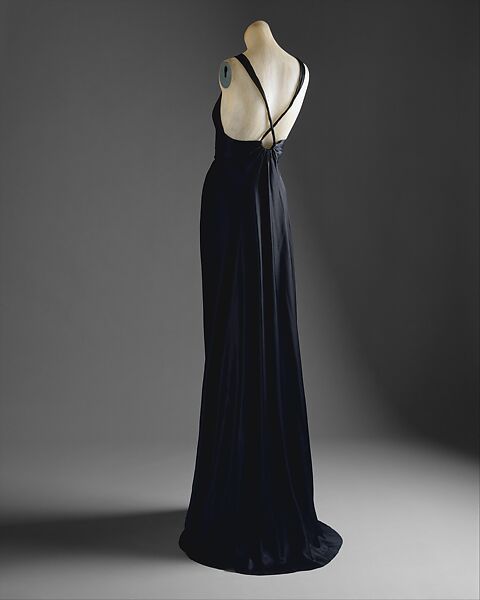
1924–25 1936-37

Evening dress • 1938–39


1936 1929

1938


1931 1936–37
All images courtesy of The Metropolitan Museum of Art Costume Institute, New York City
#fashion history#vintage dresses#historical dresses#madeleine vionnet#fashion designer#french fashion designer#metropolitan museum of art#met costume institute#evening dresses#30s evening dresses#1930s fashion history#the resplendent outfit art & fashion blog#art & fashion blog
43 notes
·
View notes
Text
Study in Synth Anatomy
Based on gen. 2 models
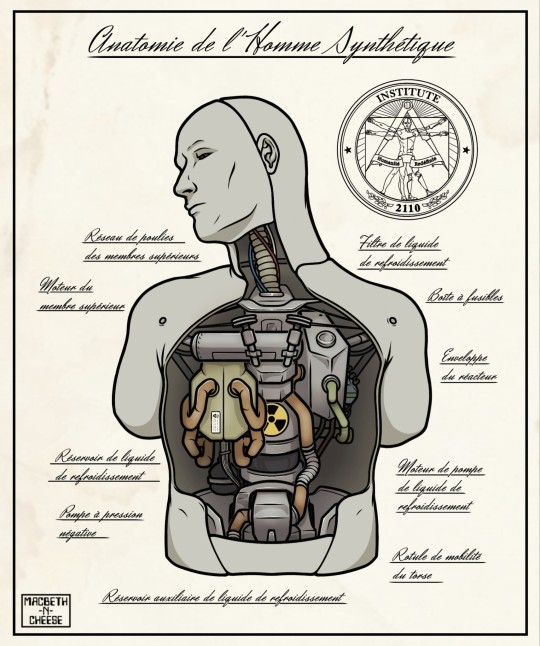
Finally done with this! It was very difficult to find good references for their insides, but I'm pretty happy with how this turned out. Wanted to give it a vintage medical book vibe ^^
(the French words are names I gave to the parts lol)
Edit: changed my signature and fixed this mistake that was driving me mad lol
Translation for the text, clockwise from the title:
'Anatomy of the Synthetic Man
Coolant Filter
Fuse Box
Reactor Casing
Coolant Pump Motor
Torso Mobility Joint
Auxiliar Coolant Tank
Negative Pressure Pump
Coolant Tank
Upper Limb Motor
Upper Limb Pulley Array'
There are a lot of HC parts that I ended up not including, because it would be wayyy too busy
775 notes
·
View notes
Text

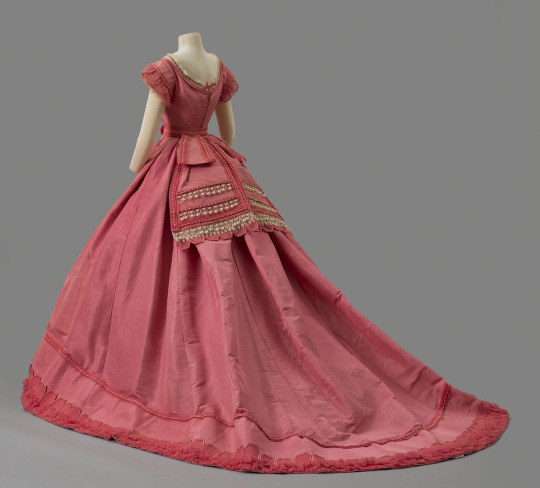
Pink silk ball gown, ca. 1867, French.
By Emile Pingat.
Albany Institute of History & Art.
#womenswear#extant garments#dress#silk#19th century#french#albany institute#1867#1860s#1860s dress#1860s extant garment#1860s France#Emile pingat#pink#ball gown#evening#1860s evening#1860s ball gown
269 notes
·
View notes
Text

Portrait of Constance Pipelet
Artist: Jean-Baptiste-François Desoria (French, 1758–1832)
Date: 1797
Medium: Oil on canvas
Collection: Art Institute of Chicago, Chicago, IL, United States
Description
Painted in the aftermath of the French Revolution, Désoria’s Portrait of Constance Pipelet typifies the Neoclassical style of portraiture practiced by Jacques-Louis David and his circle. The figure, placed parallel to the picture plane and silhouetted against the bright blue of the sky, evokes antique relief sculpture. Her white cotton dress was the fashionable attire of middle- and upper-class women in the 1790s, its antique associations reflecting Neoclassical ideals and its simplicity echoing the egalitarian spirit of the new French Republic. Constance Pipelet, later Constance de Salm-Dyck, was a noted poet, librettist, and feminist with a salon that attracted the literary and artistic notables of Paris.
#neoclassical art#portrait#french culture#painting#constance pipelet#oil on canvas#fine art#oil painting#artwork#french art#woman#three quarter length#seated#white dress#chair#book#curly hair#mountains#jean baptiste francois desoria#french painter#european art#18th century painting#art institute of chicago
26 notes
·
View notes
Text

Still Life: Corner of a Table, Henri Fantin-Latour, 1873.
#henri fantin latour#still life#nature morte#art institute of chicago#oil on canvas#painting#19th century#19th century art#french artist#french painter#french art#flowers in art#domestic interior#japonisme#art#artwork#classical art#oil painting#art history
24 notes
·
View notes
Text

Tight-Rope Walker
Artist: Jean Louis Forain (French, 1852–1931)
Date: c. 1885
Medium: Oil on canvas
Collection: Art Institute of Chicago, Chicago, IL, United States
#painting#oil on canvas#fine art#genre art#tight rope walker#audience#men#women#performance#costume#hat#french culture#performer#jean louis forain#french painter#french art#oil painting#artwork#art institute of chicago#european art#19th century painting
63 notes
·
View notes
Text

Alexandre-Jean Dubois-Drahonet (1791-1834) "Portrait of Achille Deban de Laborde" (1817) Oil on canvas Located in the Clark Art Institute, Williamstown, Massachusetts, United States Painted during the Bourbon restoration, this portrait depicts the son of a fallen Napoleonic hero during a time of anti-imperialism in France. Eight-year-old Achille wears a miniature version of the embroidered Hussar uniform his father, Baron Jean-Baptiste Deban de Laborde, would have worn. His father’s military awards, notably the ceremonial sword and Légion d’honneur hanging in the upper left, surround the young boy. Achille would ultimately rise to the rank of colonel in the French cavalry.
#paintings#art#artwork#genre painting#male portrait#alexandre jean dubois drahonet#oil on canvas#fine art#clark art institute#museum#art gallery#french artist#portrait of a boy#history#aristocracy#serving looks#he ate#clothing#clothes#red#black#boots#swords#weapons#weaponry#1810s#early 1800s#early 19th century
100 notes
·
View notes
Text
Pont des Arts upon Seine

#Pont des Arts#Bridge#River#Seine#Institut de France#Cityscape#Cloudy Sky#French Moments#Love Locks#Paris#France
78 notes
·
View notes
Text
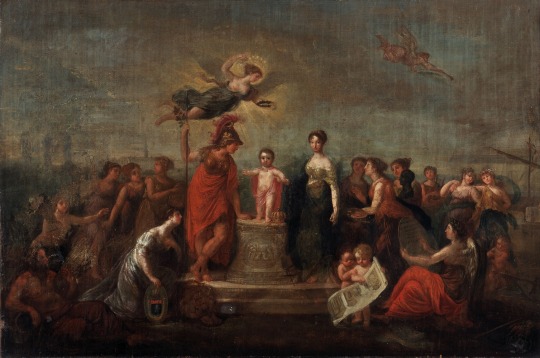

Allegory of the Birth of the King of Rome, 1811
Ernest Joseph Bailly
Museum of Fine Arts Ghent
#Ernest Joseph Bailly#Bailly#Napoleon ii#Duke of Reichstadt#king of Rome#Museum of Fine Arts Ghent#Flemish institute of archives#napoleonic era#napoleonic#napoleon#napoleon bonaparte#first french empire#french empire#history#19th century#painting#Flemish#Flemish art#baroque#Marie Louise of Austria#Marie Louise#Marie-Louise#neoclassical#art#paintings#19th century art
77 notes
·
View notes
Text
The Cape, 1800s Style

Probably European • Wool and silk • 1840s • Metropolitan Museum of Art

American or European • 1850s • Wool, silk, and cotton

British • 1860s • Wool and silk

American • Wool • 1870s

French • Silk • 1880s • Metropolitan Museum of Art

1890s • Machine-made lace • House of Worth • Rijksmuseum, Amsterdam
#fashion history#women's fashion history#historical fashion#metropolitan museum of art#costume institute#vintage capes#1800s fashion#the resplendent outfit art & fashion blog#rijksmuseum#fashion history blogs on tumblr#house of worth#american fashion history#european fashion history#french fashion history
38 notes
·
View notes